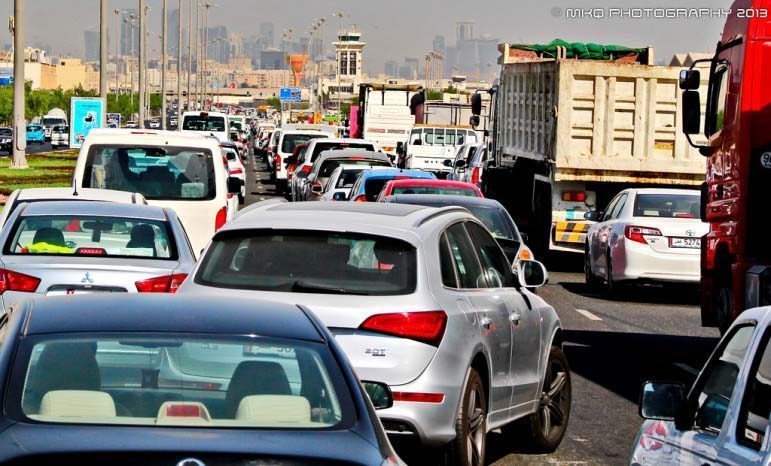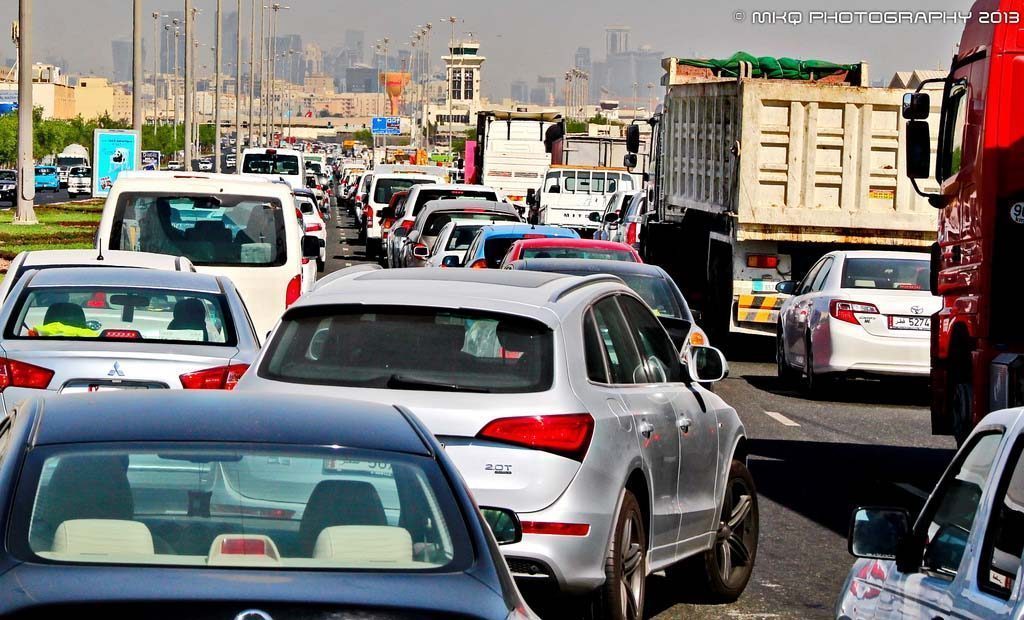
When it comes to driving on Qatar’s roads, it seems that many motorists march to their own drumbeats – changing lanes suddenly, refusing to give the right of way at intersections, or reversing incorrectly.
Exercising caution while behind the wheel may seem like commonsensical advice, but several driving instructors who recently spoke to Doha News said many of the students in their classes – the majority of whom are not from Qatar – simply don’t understand the rules:
“Many expats don’t know anything about (the fundamentals of safe driving) and that can cause accidents,” said Hassan Abdel Hafez, training manager at the Doha Driving Academy.
The instructors said the problem stems from differences across driving cultures in various countries.
And though exam pass rates here are already low, some added that they favor the idea of stricter requirements for residents who wish to obtain driver’s licenses in Qatar.

Mindful that some of the people who are licensed to drive here may not be ready to get behind the wheel, authorities have been working to develop a unified driving curriculum to be taught across all schools, which one instructor said would “probably be introduced by next month.”
The new curriculum is expected to include more information on road signs, mandatory signals and a whole chapter on the mechanism of the car and how it works, according to Mohamed Al Sheikh, training manager of Al Khebra driving school.
But instructors argue that more driving hours and oversight of motorists are needed.
‘Unlearning’ bad habits
The majority of residents who enroll in driving schools here are expats (who account for more than 85 percent of Qatar’s population).
The steps one must take to obtain a driver’s license differ by nationality. Some residents can immediately swap their original driver’s license with a Qatari one.

Others who hold licenses from home are required to take between 12 to 25 hours of driving lessons and pass a driving test before getting their license.
But expats who have never been licensed must take 40 hours of road lessons, 10 hours of theory courses and exams.
According to Abdel Hafez, the current requirements are not strict enough to help students grasp the culture of driving in Doha – especially for expats who must “unlearn” poor driving habits picked up in their home countries:
“Some of these countries give driver licenses to citizens, who can’t even operate a motorcycle, let alone a car – and then we’re left to deal with it,” he said.
But Adel Salem, director of Al Rayah Driving School, said that the Traffic Department has implemented a sound system to ensure that a student cannot obtain his license without showing an understand of how the roads work.
Referring to the theory portion of the test, which covers issues like signage and road rules, he said “the exam is not easy,” adding that expats rarely pass it the first time they take it.
Practical exams
Students must also take two practical exams to get their license here.

One exam is held inside the driving school, during which a driver steers the car once ahead and once in reverse in an “L” shape (a three-point turn).
The driver is then required to parallel park between two pillars without knocking them down.
The other test is done on the main roads of Qatar. Driving instructors say most expats fail their practical exams at least once.
Each practical test can be taken four times. If an applicant fails a fourth time, he/she is required to retake the entire 40-hour driving course.
Abdel Hafez said around 65 percent of the expats fail at his school, while Al Sheikh said that two to five students fail each day at his.
Crowded roads
Despite these failure rates, over 100,000 licenses were issued in Qatar last year, according to government figures cited in the Peninsula.

That’s about 8,700 licenses every month, with around 90 percent of them going to expats.
To ensure residents – especially taxi and truck drivers – don’t return to their old methods of driving “without regard for anyone else on the road,” Al Sheikh suggested that there should be more supervision from the motorists’ companies and sponsors.
For his part, Abdel Hafez recommended that all expats take a mandatory evaluation exam to determine what level of driving they are at and how many lessons they need.
Government efforts
Though serious injuries from accidents are on the rise, 2014 government traffic figures suggest that the number of road deaths in Qatar has decreased compared to the previous year.
There were approximately 9.93 road deaths per 100,000 residents in 2014, compared to 12.2 per 100,000 residents the previous year.
This means that Qatar is on track towards meeting its National Development Strategy goal of reducing traffic fatalities to 10 deaths per 100,000 residents by 2016.

In 2013, the government launched a 10-year National Road Safety Strategy (NRSS), which aims to save at least 800 lives and prevent 2,000 serious injuries over the next decade.
Various strategies to improve road safety have been introduced since then, including the installation of more speed cameras and a road construction and improvement program, which has included converting many of the city’s roundabouts into intersections.
However, according to driving instructors, expats can be just as confused by intersections as roundabouts.
Abdel Hafez added that constant construction, road development and ensuing diversions also cause problems.
“The road diversions should be announced on the media, so drivers are prepared to deal with any changes on their route,” he said.
Despite the traffic department’s efforts, driving instructors say many residents remain frustrated at the “carelessness” of others on the road. Al Sheikh concluded:
”When someone is driving, he’s not only driving his car, he’s driving five cars because he has to pay attention to the cars surrounding him on his left, right, rear and front …This is a big responsibility.
A driver should be able to return to his home and family in one piece…that’s all we want.”
Thoughts?







